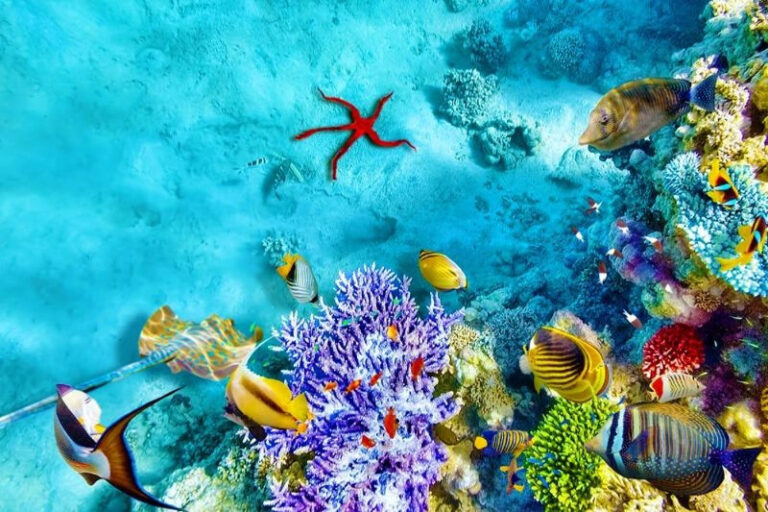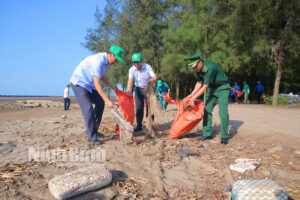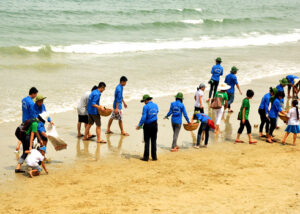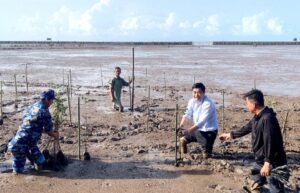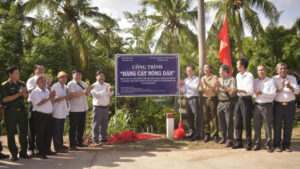Boasting sublime unspoiled beauty, from rolling verdant hills to spectacular terraced fields, Sa Pa is a mix of natural wonder.
Near the Chinese border in the northwest province of Lao Cai and around 376 kilometers from Hanoi, Sa Pa, founded as a scenic resort by the French in 1903, is best known for its wild, unspoiled landscapes.
Sa Pa’s scenic highlights include Hoang Lien Son National Park and the awe-inspiring 3,143-meter-high Mount Fan Si Pan – the highest mountain peak in Indochina. Every year, the area attracts thousands of tourists from all over the world who come to marvel at Sa Pa’s lush vegetation and spectacular scenery.
Nestled around 1,600 meters above sea level, Sa Pa is cloud-covered and cool year-round, with occasional snowfalls in the winter.
It is said that visitors who come to Sa Pa in the summer can experience up to three seasons in a single day. In the morning and afternoon, the weather is cool like that in the spring and autumn, while at noon, it is as sunny and cloudless as a warm summer’s day.
Visitors often travel to the city of Lao Cai by train before heading by coach to Sa Pa. Upon arrival, tourists can learn about the area’s sprawling rice paddies and observe the ethnic H’Mong and Dao peoples who wear a brilliant array of colorful, traditional clothing.
Stunning terraced fields
According to a survey carried out by US-based Travel and Leisure magazine, Sa Pa’s verdant terraced fields were ranked among the seven most beautiful in the world.
The most beautiful terraced field area is Suoi Thau, which is cultivated by the Dao people.
The other fields voted most beautiful by the magazine’s readers include those in Banaye (the Philippines), Yuangyang (Yunnan, China), Ubud (Bali, Indonesia), Annapurna (Nepal), Mae Rim (Chiang Mai, Thailand), and Longji (Guilin, China).
Sa Pa’s terraced fields belong to the ethnic H’Mong, Dao and Giay people, and are located in the Muong Hoa Valley of Lao Chai District. The area totals around 10 square kilometers and tourists can visit to learn about the process of rice planting and cultivation.
The fields were described by Travel and Leisure as "Ladders to the sky" because of their astounding natural beauty.
“It’s the best place in Vietnam with a rich cultural heritage and splendid landscape,” said a Singaporean tourist.
“The scenery and people were amazing,” echoed a tourist from the UK.
Lao Cai’s Department of Culture, Sports and Tourism also proposed that provincial authorities and the culture ministry should carry out research and compile information on Sa Pa’s terraced fields, Hoang Lien Son National Park, and an ancient rock bank to submit to UNESCO for recognition as world cultural heritage sites.
“This is a difficult task but we are trying to turn Sa Pa’s terraced fields into a world heritage site for the many foreign travelers who love Sapa and Vietnam,” said Tran Huu Son, the department’s chief.
Cultural diversity
Home to several ethnic groups like the H’Mong, Red Dao, Kinh, Tay, Giay, Hoa, and Xa Pho, Sa Pa is a mosaic of cultures and traditions. Many visitors enjoy learning about the ethnic people’s daily activities, traditions and beliefs.
Tourists are often astonished by the many billowing red headdresses worn by women of the Red Dao minority, visible all over town.
The H’Mong and Dao people make up the largest ethnic groups in the region. Their villages may appear simple and old-fashioned from afar, but many people now own mobile phones and regularly access their email from communal computers.
While some of the older generations of the ethnic minorities have had little formal education and are illiterate, most of the younger generations receive schooling and have a good command of English, French and a handful of other languages.
Tourists can also choose to go on two treks while staying in Sa Pa. The first is a 7 km journey, which takes about four hours and includes a stop for lunch. The other is a full-day adventure, covering around 17 km and following the perimeter of the rice paddies, through forested areas, past the doorsteps of tribal people’s homes, and across rivers and waterfalls.
Watching the locals go about their daily business is also an interesting experience. The children in Sa Pa work extremely hard-tending buffaloes, working in the fields, and caring for their younger siblings. Many of the young girls learn the timeless art of embroidery from their mothers.
The ethnic girls often marry young, at around age 14, and depend on the skills learned from their mothers to start new families of their own.
Sa Pa is also famous for its “love market,” which takes place on Saturday evenings. This cultural tradition once served as a way for ethnic locals to meet, socialize, and find a partner to marry.
In the past, young girls from the Red Dao hill tribes used to come to Sa Pa and sing songs to find partners. The girls would sing while hidden in the dark and when a boy found them – if they liked each other – they would disappear into the forest for three days and would then marry at a later date.
But with the development of tourism, the original love market, with its purpose of uniting young couples, has faded away. Visitors can still visit the area on Saturday nights, however, and be treated to a lively market atmosphere.
With its astonishing beauty and diverse peoples, Sa Pa is a remarkable travel destination and well worth a visit.



